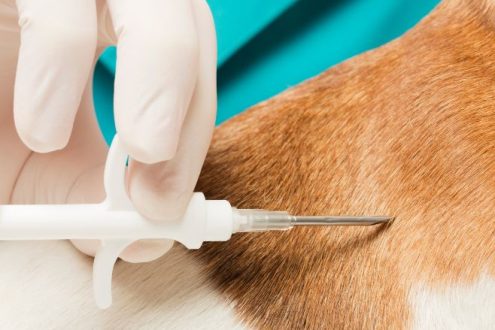Microchipping
Microchipping Pets: What You Need to Know
As a pet owner, you want to do everything you can to keep your furry friend safe. One way to ensure their safety is to get them microchipped. Microchipping is a simple and effective way to help ensure that your pet is returned to you if they ever get lost or stolen. In this article, we’ll discuss the basics of microchipping and answer some common questions about the process.
Trusted Team
Peace of mind
We love dogs
Convenience
What Is a Microchip?
A microchip is a tiny device, about the size of a grain of rice, that contains a unique identification number. The microchip is inserted under your pet’s skin, usually between the shoulder blades, using a hypodermic needle. Once implanted, the microchip can be read by a scanner, which allows your pet’s identification number to be retrieved.
How Does Microchipping Work?
If your pet gets lost and is brought to a shelter or veterinary clinic, the staff will use a scanner to check for a microchip. If a microchip is detected, they will use the identification number to contact the microchip company’s database. The database will then provide the shelter or clinic with your contact information, allowing them to get in touch with you and reunite you with your pet.
Is Microchipping Safe?
Microchipping is a safe and non-invasive procedure. The microchip is made of biocompatible materials, which means that it is unlikely to cause an allergic reaction or be rejected by your pet’s body. The implantation process is quick and relatively painless, and your pet should not experience any discomfort or side effects after the procedure.
Do Microchips Need to Be Replaced?
Microchips are designed to last for the life of your pet. They do not have a battery or any other components that can wear out or expire. However, it is important to make sure that your contact information is up to date in the microchip company’s database. If you move or change your phone number, be sure to update your information with the microchip company.


How Much Does Microchipping Cost?
The cost of microchipping your pet will vary depending on your location and the type of microchip used. In general, you can expect to pay between $30 and $50 for the procedure. Some animal shelters and rescue organizations may offer microchipping for a lower cost or even for free.

